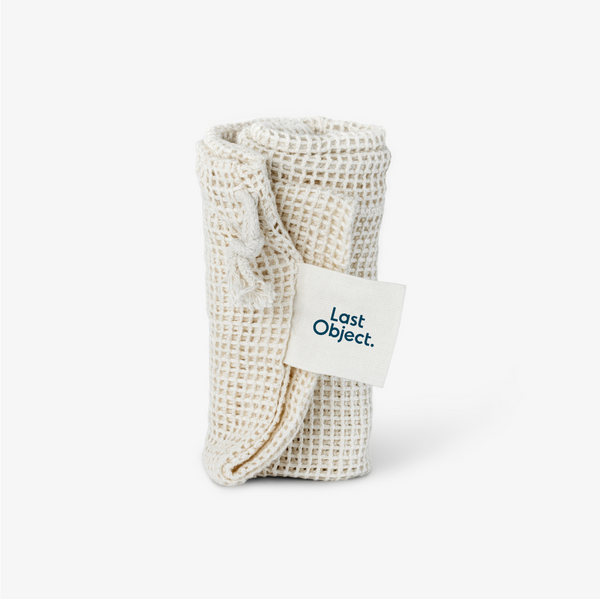Eco-Friendly Food: Keep The Environment In Mind When You Eat
May 27, 2020Anyone who is concerned with the environment needs to consider their dining habits too. While what you eat is often overlooked, it does indeed significantly impact your carbon footprint. What’s more, food production and climate change are inextricably linked. Some farming practices cause serious damage to ecosystems and food transportation also causes a great deal of pollution. All in all, there are many factors to take into account when it comes to eating sustainably. The following article discusses eco-friendly food to clear the air on the topic.
Tips To Eat Eco-Friendly

You can adopt a number of practices to eat more sustainably. A few of these are explained in turn below.
Go To Farmers Markets
A good starting point is locating nearby farmers markets. There are numerous environmental benefits to shopping at such places. Firstly, the food is generally sourced from nearby. As a result, it’ll only have caused negligible amounts of pollution during transportation. Secondly, the food tends to be sold without packaging. As a result, you’ll be producing less household waste. In addition to this, the food is often much fresher than food bought from supermarkets.
Only Purchase What You Can Reasonably Eat
No matter where you shop, only buy what you think you’ll eat. This will help prevent you from purchasing excess food and causing more waste. It will also save you money, by reducing the contents in your shopping basket.
Grow Fruits & Vegetable In Your Garden
Another way of saving money is to grow your own fruit and vegetables. If you have space outside, try setting up little vegetable and fruit gardens. You won’t just create a source of free food but will also be reducing your carbon footprint. Further to this, establish your own composter to benefit from more savings and also make good use of food scraps.
Cut Down On Meat Consumption
One of the quickest ways to develop a more eco-friendly diet is to eat less meat. The deforestation and methane produced by meat farming is extremely hazardous to the environment. If you are going to buy meat, make sure it’s hormone and antibiotic free. Cattle farmers that give these substances to their animals pollute water supplies.
Make Use Of Leftovers Where Possible
A great eco-friendly dining trick is to get creative with your leftovers. Consider ways you can be repurpose your leftovers for further recipes. This will make the food you buy go further while also reducing your household waste output.
Top Eco Friendly Foods

Tomatoes
Locally grown tomatoes have a very low carbon footprint. Additionally, they develop extremely long root systems. As such, they can access water in deep soil, which results in a lower water footprint.
Broccoli
Broccoli is as healthy for the planet as it is for you. It produces notably low amounts of carbon dioxide since much of the plant is not harvested. Instead, it biodegrades in the soil, which releases carbon into the ground, rather than the air.
Potatoes
Potatoes have a range of qualities that are good for the environment. They also require relatively minimal amounts of water. It only takes 34 gallons to grow each pound. By comparison, rice requires 403 gallons for the same volume of crop. Additionally, potatoes can be stored for long periods without becoming inedible.
Beans
Beans are a great source of protein, especially if you’re avoiding meat. On top of this, they have an extremely low carbon footprint. In fact, scientists have been urging more people to eat more beans to help combat climate change. They’ve explained that swapping beef for beans could meet up to 74% of the USA’s climate goals.
Green Peas
Green peas are another type of environmentally friendly food. They actually convert nitrogen from the atmosphere into beneficial ammonia or nitrates. This improves the atmosphere while fertilizing the soil. Additionally, they are extremely water-efficient.
Organic Tofu
If you want an alternative to meat, look no further than organic tofu. Firstly, it produces significantly less greenhouse gases than beef or pork. Furthermore, it’s a much greener way of getting your daily protein. Make sure you buy the organic kind though to avoid contributing to the spread of harmful chemicals and GMOs.
Lentils
Lentils are an environmental and nutritional superfood. Their carbon footprint is around 43 times lower than that of beef. Lentils are also extremely high in protein, and take relatively low amounts of water to grow. Additionally, they improve the quality of the soil they are grown in. In short, lentils are one of the most sustainable foods around.
Figs
Figs give structure and support to a range of ecosystems all around the world. Many creatures rely on these flowers for food. A resilient plant, they’ve been found to flourish in unforgiving climates. They also have a fascinating symbiotic relationship with the fig wasp.
Mussels
If you’ve been looking for sustainable seafood, it doesn’t get much better than mussels. They are one of the few types of seafood that can be farmed in a renewable way. This is achieved without lots of bycatch or causing damage to coral reefs.
Local Fish
Another great source of environmentally friendly seafood is locally caught fish. Getting your fish this way avoids contributing to the problem of industrial-scale fishing, which is now a major threat to ocean ecosystems.
That being said, sustainable fishing is also widely available. If you are going to buy fish, make sure it’s local and green. Just make sure vendors can provide a description of the fish’s origins. It’s also a good idea to buy directly from the source as it means less pollution without the extra transportation.
Amaranth
Amaranth is another plant that can be grown with very little environmental impact. This grain grows in enormous numbers and very quickly. It also has a very small carbon footprint. Additionally, it’s extremely healthy, can withstand droughts, and easily adapt to new environments.
Top Worst Foods For The Environment

Beef
As tasty as beef is to most meat lovers, it’s no great friend to the environment. Beef is the second worst producer of greenhouse emissions of all foods. A whopping 27 kg of greenhouse gasses are produced for each kilo of beef eaten.
Pork
Pork is marginally better than beef in terms of its environmental impact. Nevertheless, it’s still one of the worst offenders when it comes to greenhouse emissions. A 4-ounce serving reportedly produces the same amount of carbon dioxide as driving your car three miles.
Cheese
Different types of cheese cause different amounts of environmental damage. Regardless of this, cheese in general is one of the most damaging foodstuffs for the environment. It can generate up to 13.52 kg of greenhouse emissions for every kg that’s consumed. This is about 13 times more than products like tomatoes, beans, and lentils.
Lamb
While lamb is a delicacy to many, it’s also extremely unsustainable. Lamb has the worst impact on the environment. Nearly 40 kg of greenhouse gasses are produced for every kilo of lamb that is consumed. That’s around a third more than beef, the next worst offender.
Eco-Friendly Food That Helps Protect The Environment
As can be seen, eating eco-friendly food brings you a step closer to a more sustainable life. You know how and where to shop as well as the types of food that are most and least eco-friendly. Apply this valuable intelligence to your normal practices as much as possible to help limit further devastation to the environment.
MORE Going Zero Waste ARTICLES View all ›
Ready to make
the switch?
- Powerful Cleaning
- Dissolves Easily
- Skin-Friendly
- Eco-Friendly
- No Mess















